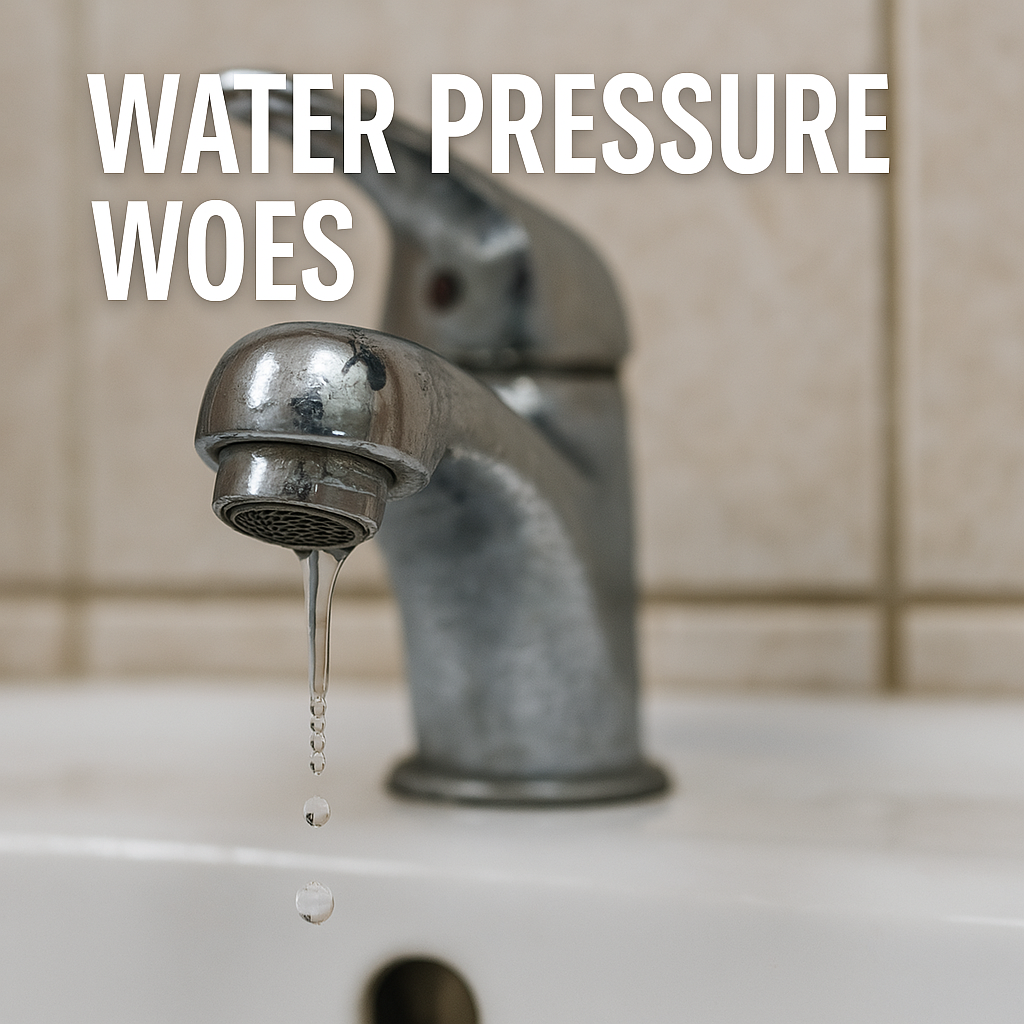There’s nothing more annoying than stepping into the shower only to be greeted by a weak trickle of water—or waiting forever for your sink to fill. Low water pressure is a common plumbing issue that can affect daily comfort and efficiency in your home. Fortunately, many causes can be easily identified and addressed without major renovations. Understanding the reasons behind water pressure problems can help you find quick solutions and know when it’s time to call in a professional.
Common Causes of Low Water Pressure
- Clogged Pipes or Mineral Buildup
One of the most frequent causes of low water pressure is mineral buildup within the pipes. Homes in areas with hard water are particularly susceptible. Over time, calcium and magnesium can accumulate inside your plumbing lines, reducing water flow. This buildup narrows the interior of the pipes, causing a noticeable drop in pressure at faucets and showerheads. If you suspect mineral buildup, a licensed plumber can flush your system or recommend the installation of a water softener to prevent future issues. - Hidden Leaks
Even a small leak can significantly reduce water pressure, especially if it goes undetected. Leaks divert water from your fixtures, wasting water and leading to higher utility bills. Signs of a hidden leak include unexplained damp spots on ceilings, walls, or floors, and a sudden spike in your water bill. Early detection is key—having a professional inspect your system can save money and prevent water damage to your home. - Faulty Pressure Regulator
Many homes are equipped with a pressure regulator, a device that controls the flow of water into your home. If this regulator fails, it could result in either excessively high or unusually low water pressure. A faulty regulator is often overlooked because it’s not easily accessible, but it can be tested and replaced by a qualified plumber. - Corroded or Aging Pipes
Older homes, especially those built before the 1970s, may have galvanized steel pipes that are prone to corrosion. As pipes age, rust and corrosion reduce the internal diameter, restricting water flow. In severe cases, the pipes may begin to flake or collapse from the inside. Upgrading to modern piping materials like PEX or copper can drastically improve water flow and pressure. - Municipal Water Supply Issues
If your neighbors are also experiencing low water pressure, the problem may lie with the municipal water supply. Issues such as high demand, maintenance work, or problems at the pumping station can temporarily affect the water pressure in your area. You can usually contact your local water utility provider to check for updates or service alerts.
How to Fix Low Water Pressure
Some water pressure issues are easily fixable with a few basic maintenance steps:
- Clean Faucet Aerators: Mineral buildup can also affect the small screens at the end of faucets. Remove the aerator and soak it in vinegar overnight to clear out deposits.
- Check the Main Shutoff Valve: If this valve is partially closed, it can restrict water flow throughout your entire home. Make sure it is fully open.
- Flush the Water Heater: Sediment buildup inside your water heater can lower hot water pressure. Flushing the tank at least once a year can help maintain flow and efficiency.
- Replace Old Fixtures: Sometimes the fixtures themselves are the culprit. Replacing outdated or clogged showerheads and faucets can restore better flow.
Call the Experts
Low pressure isn’t just a nuisance – it can signal bigger plumbing problems that require expert diagnosis. If you’ve tried basic fixes and still experience weak flow, don’t wait for the issue to worsen. Magee Plumbing can identify the root cause and provide long-lasting solutions to restore your water pressure.
Call Matt at Magee Plumbing at 608-921-2553 today for expert service and peace of mind.
#LowWaterPressure
#CloggedPipes
#WaterPressureProblems
#PlumbingRepairs
#PressureRegulator
#AgingPipes
#WaterHeaterSediment
#CleanFaucetAerators
#HiddenLeaks
#WaterSoftener

